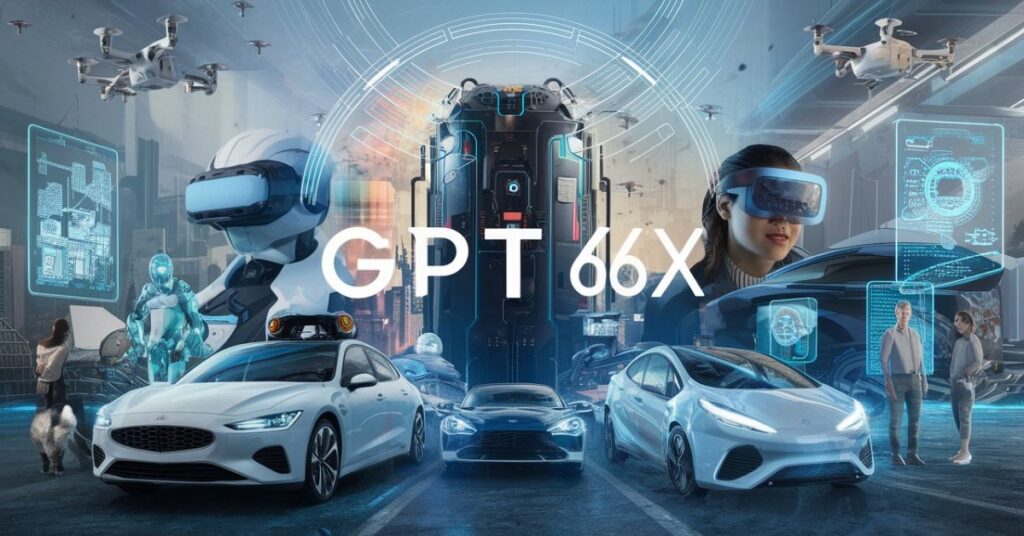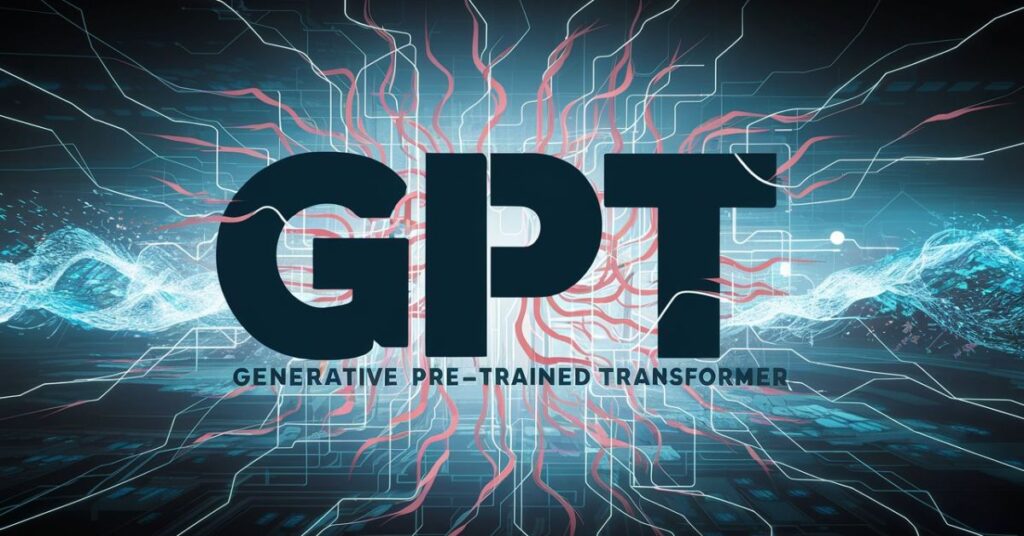GPT66X is an advanced AI model. It represents the forefront of technology, revolutionizing natural language processing and machine learning.
Discover the future with GPT66X, the pinnacle of AI innovation. Explore the latest breakthroughs in technology and unlock endless possibilities in artificial intelligence.
GPT66X is a state-of-the-art AI model, pushing the boundaries of innovation. It incorporates cutting-edge advancements in natural language processing and machine learning to redefine what’s possible in AI technology.
What is AI technology?

AI (Artificial Intelligence) technology refers to the development of computer systems capable of performing tasks that typically require human intelligence. These tasks include learning, reasoning, problem-solving, perception, and language understanding. AI technology encompasses various techniques such as machine learning, deep learning, natural language processing, and computer vision. It enables computers to mimic cognitive functions associated with human intelligence.
Also Read This: Guia Silent Hill Geekzilla: Unraveling The Depths Of Gaming
Evolution of AI Technology
The evolution of AI technology has been marked by significant milestones and advancements across various domains. Here’s a brief overview:
Symbolic AI (1950s-1980s)
Early AI research centered on symbolic or rule-based systems. Human knowledge was encoded into sets of rules or symbols. This approach yielded advancements like expert systems capable of reasoning and decision-making within defined domains.
Machine Learning (1980s-present)
Machine learning dominates AI, enabling pattern learning and prediction from data. Advancements like neural networks mimic human brain structures. Key algorithms include support vector machines and decision trees.
Deep Learning (2010s-present)
A subset of machine learning gained prominence. This was fueled by powerful computational resources and large datasets. Deep neural networks with many layers showed breakthrough performance. They excelled in tasks like image recognition, natural language processing, and speech recognition.
Natural Language Processing (NLP) Advancements
NLP progresses with Google’s BERT and OpenAI’s GPT models. They achieve human-level performance in tasks like language translation and sentiment analysis.
Reinforcement Learning (RL)
RL algorithms learn to make sequential decisions by interacting with an environment and receiving feedback in the form of rewards. Breakthroughs in RL, including DeepMind’s AlphaGo and OpenAI’s DOTA 2-playing AI, showcase its potential in complex decision-making scenarios.
AI in Robotics
AI has revolutionized robotics by enabling autonomous navigation, object recognition, and manipulation. Applications range from self-driving cars and drones to industrial robots in manufacturing.
AI Ethics and Responsible AI
As AI systems become more pervasive, there’s a growing emphasis on ethical considerations, transparency, and accountability. Frameworks for responsible AI development and deployment are being developed to address issues like bias, privacy, and societal impact.
Healthcare
AI technologies are transforming healthcare through applications such as medical image analysis, drug discovery, personalized medicine, and virtual health assistants.
Finance
In finance, AI is used for algorithmic trading, fraud detection, risk assessment, and customer service automation, among other applications.
AI and Creativity
AI is being applied to creative domains such as art, music, and literature, with algorithms generating content ranging from paintings to poetry.
How GPT66X Works
Here we discuss how this version of the GPT series might work:
Architecture
Like its predecessors, GPT66X would likely be based on a transformer architecture, which has proven highly effective for natural language processing (NLP) tasks. Transformers are composed of multiple layers of self-attention mechanisms, enabling the model to capture long-range dependencies in sequential data.
Scale
The “66X” designation suggests a significant increase in scale compared to previous versions. This could entail a vastly larger number of parameters, allowing the model to capture more complex patterns and nuances in text data.
Pre-training
GPT66X would undergo a pre-training phase on a diverse corpus of text data, similar to previous iterations. During pre-training, the model learns to predict the next word in a sequence given the preceding context. This process helps the model develop a broad understanding of language.
Fine-tuning
After pre-training, GPT66X could be fine-tuned on specific tasks or domains by exposing it to additional labeled data. Fine-tuning helps adapt the model to perform well on specialized tasks such as language translation, sentiment analysis, or text generation.
Multi-modal capabilities
Advanced versions of GPT might incorporate multi-modal capabilities, allowing the model to process and generate text alongside other modalities such as images, audio, or video. This would enable richer interactions and applications across a wide range of domains.
Continual learning
GPT66X might incorporate techniques for continual learning, allowing the model to adapt and update its knowledge over time as it encounters new data. Continual learning is essential for keeping the model’s knowledge up-to-date and relevant in dynamic environments.
Ethical and safety considerations
As AI models become increasingly powerful and capable, there’s a growing emphasis on addressing ethical and safety concerns. GPT66X would likely incorporate mechanisms to mitigate risks such as bias, misinformation propagation, and unintended harmful behavior.
Scalable deployment
To facilitate widespread deployment and use, GPT66X would need to be designed with scalability and efficiency in mind, enabling it to run on a variety of hardware platforms and accommodate diverse application requirements.
Applications and Uses of GPT66X

Given the hypothetical nature of “GPT66X,” its potential applications and uses could be vast and varied, building upon the capabilities of existing language models like GPT-3. Here are some potential applications:
Conversational AI
GPT66X could power advanced chatbots and virtual assistants capable of engaging in natural and contextually relevant conversations across a wide range of domains, including customer support, education, healthcare, and entertainment.
Content Creation
Writers, journalists, and content creators could leverage GPT66X to generate high-quality articles, blog posts, marketing copy, and creative content. The model could assist in brainstorming ideas, drafting outlines, and refining writing styles.
Language Translation
GPT66X could enhance language translation systems by providing more accurate and contextually appropriate translations across multiple languages. Its ability to understand nuances in language could lead to improved translation quality.
Summarization
GPT66X could be used to automatically summarize long documents, articles, or research papers, enabling users to quickly extract key information and insights. This could be valuable in fields such as research, education, and content curation.
Personalized Recommendations
E-commerce platforms, streaming services, and news aggregators could utilize GPT66X to generate personalized recommendations based on user’s preferences, browsing history, and context. The model could understand users’ tastes and preferences more effectively, leading to more relevant recommendations.
Creative Collaboration
GPT66X could facilitate collaborative creativity by assisting artists, musicians, and designers in generating ideas, concepts, and prototypes. It could provide inspiration, feedback, and suggestions throughout the creative process.
Educational Tools
GPT66X could support personalized learning experiences by providing tailored explanations, examples, and exercises across various subjects and skill levels. It could serve as a virtual tutor, answering questions, explaining concepts, and offering guidance.
Knowledge Discovery
GPT66X aids researchers in knowledge discovery. It analyzes text data, identifies patterns, and generates hypotheses for investigation.
Ethical and Safety Applications
GPT66X could be utilized for detecting and combating misinformation, hate speech, and harmful content online. It could also support efforts to promote ethical AI development and ensure responsible use of AI technologies.
Accessibility
GPT66X could contribute to making information more accessible to individuals with disabilities by providing alternative formats, summarizations, and explanations tailored to their needs.
NATURAL LANGUAGE PROCESSING
Natural Language Processing (NLP) is a branch of artificial intelligence that focuses on the interaction between computers and human languages. It enables computers to understand, interpret, and generate human language in a way that is both meaningful and contextually relevant. NLP encompasses a wide range of tasks and techniques, including:
Text Preprocessing
This involves cleaning and preparing text data for analysis, which may include tasks such as tokenization (splitting text into words or phrases), stemming (reducing words to their root form), and removing stop words (commonly occurring words that carry little semantic meaning).
Part-of-Speech Tagging
Assigning grammatical labels (such as nouns, verbs, adjectives, etc.) to words in a sentence, helps in understanding the syntactic structure of the text.
Named Entity Recognition (NER)
Identifying and classifying named entities (such as people, organizations, locations, dates, etc.) within text. NER is useful for extracting structured information from unstructured text data.
Sentiment Analysis
Determining the sentiment or emotional tone expressed in a piece of text, which can be positive, negative, or neutral. Sentiment analysis is commonly used for social media monitoring, customer feedback analysis, and market research.
Language Translation
Translating text from one language to another while preserving its meaning and context. Machine translation systems use NLP techniques to analyze and generate translations based on large bilingual corpora.
Text Generation
Creating new text based on a given input or context. This can include tasks such as language modeling, dialogue generation, and content creation.
Text Classification
Categorizing text documents into predefined categories or classes based on their content. Text classification is widely used for spam detection, topic categorization, sentiment analysis, and document tagging.
Information Extraction
Identifying and extracting specific pieces of information from text, such as events, relationships, or key facts. Information extraction techniques may include entity extraction, relation extraction, and event extraction.
Question Answering
Automatically answering questions posed in natural language based on a given corpus of text. Question-answering systems use NLP techniques to understand and process both the question and the text data to find relevant answers.
Chatbots and Virtual Assistants
Building conversational interfaces that can understand and respond to user queries and commands in natural language. Chatbots and virtual assistants rely heavily on NLP for natural language understanding and generation.
Advantages and Challenges of GPT66X
Since “GPT66X” is a hypothetical model, its advantages and challenges can be speculative. However, based on the progression of AI and language models like GPT-3, here are potential advantages and challenges:
Advantages
- Enhanced Language Understanding: GPT66X would likely exhibit a deeper understanding of human language, enabling it to comprehend and generate text with greater nuance, context sensitivity, and accuracy.
- Improved Performance: With significantly more parameters and training data compared to previous models, GPT66X could offer improved performance across a wide range of natural language processing tasks, including translation, summarization, and sentiment analysis.
- Broader Knowledge Base: The larger scale of GPT66X would allow it to capture and utilize a more extensive knowledge base, enabling more informed responses and insights across diverse topics and domains.
- Better Contextual Understanding: GPT66X might excel at understanding and maintaining context over longer passages of text, leading to more coherent and relevant responses in conversational settings and complex textual environments.
- Fewer Data Requirements: With its advanced architecture and learning mechanisms, GPT66X could potentially require less fine-tuning and annotated data for specific tasks, making it more adaptable to new domains and applications.
- Multi-modal Capabilities: GPT66X might integrate multi-modal capabilities, enabling it to process and generate text alongside other modalities such as images, audio, or video, leading to richer and more interactive AI experiences.
Challenges
- Computational Resources: Training and deploying a model as large and complex as GPT66X would require significant computational resources, including high-performance computing infrastructure and large-scale data storage.
- Data Privacy and Security: Handling vast amounts of sensitive data raises concerns about privacy, security, and potential misuse. GPT66X would need robust mechanisms to protect user data and ensure compliance with privacy regulations.
- Ethical Considerations: The use of powerful AI models like GPT66X raises ethical concerns regarding bias, fairness, accountability, and the potential for unintended consequences. Safeguarding against these risks would be crucial in the development and deployment of the model.
- Interpretability and Transparency: As AI models become more complex, understanding their decision-making processes becomes increasingly challenging. Ensuring transparency and interpretability in GPT66X would be essential for building trust and accountability.
- Fine-tuning and Domain Adaptation: Despite its generalization capabilities, GPT66X may still require fine-tuning and domain adaptation for optimal performance in specific tasks or domains. Adequately fine-tuning such a large model could be resource-intensive and challenging.
- Mitigating Negative Externalities: AI models like GPT66X have the potential to amplify existing social, economic, and cultural inequalities. Addressing issues such as bias, misinformation, and algorithmic harm would be crucial to mitigate negative externalities and ensure equitable access and impact.
Future Implications of GPT66X

The hypothetical model “GPT66X” would likely have profound future implications across various domains, driven by its advanced capabilities in natural language understanding and generation. Here are some potential future implications:
Revolutionizing Human-Machine Interaction
GPT66X could enable more seamless and natural interactions between humans and machines, leading to the development of highly intuitive and conversational AI interfaces. This could transform how we interact with technology in areas such as customer service, education, healthcare, and entertainment.
Transforming Content Creation and Consumption
With its ability to generate high-quality text and understand complex contexts, GPT66X could revolutionize content creation and consumption. It could automate the creation of articles, stories, and multimedia content, leading to more personalized and engaging user experiences.
Advancing Education and Knowledge Access
GPT66X could serve as a powerful tool for education, providing personalized tutoring, explanations, and learning materials tailored to individual students’ needs and preferences. It could also facilitate access to knowledge and information by making content more accessible and understandable across languages and domains.
Facilitating Cross-Language Communication
GPT66X’s advanced language translation capabilities could break down language barriers and facilitate cross-cultural communication and collaboration on a global scale. This could lead to greater cultural exchange, economic integration, and social cohesion.
Accelerating Scientific Discovery
GPT66X could assist researchers and scientists in analyzing and synthesizing vast amounts of scientific literature and data, accelerating the pace of discovery and innovation across various fields such as medicine, chemistry, and engineering.
Empowering Creative Expression
GPT66X could empower artists, writers, and creators by providing inspiration, feedback, and assistance in the creative process. It could facilitate the exploration of new ideas, styles, and forms of expression in art, literature, and media.
Addressing Societal Challenges
GPT66X could contribute to addressing complex societal challenges such as misinformation, climate change, and social inequality. It could help in fact-checking, information dissemination, and decision-making, enabling more informed and evidence-based policies and actions.
Redefining Work and Employment
The widespread adoption of AI models like GPT66X could reshape the nature of work and employment by automating routine tasks, augmenting human capabilities, and creating new opportunities for creativity and innovation. This could necessitate rethinking education, training, and workforce development strategies.
Ethical and Governance Considerations
As AI technologies become more powerful and pervasive, addressing ethical, legal, and governance considerations becomes increasingly important. Ensuring transparency, accountability, and fairness in the development and deployment of GPT66X would be essential to mitigate potential risks and maximize its benefits for society.
The Impact of GPT66X
The impact of a hypothetical model like “GPT66X” could be profound and far-reaching across various aspects of society, technology, and the economy. Here are some potential impacts:
Transforming Communication
GPT66X’s advanced natural language processing capabilities could revolutionize communication by enabling more natural and seamless interactions between humans and machines. This could lead to the development of highly sophisticated virtual assistants, chatbots, and conversational interfaces that enhance productivity, accessibility, and convenience in various domains.
Disrupting Industries
The widespread adoption of GPT66X could disrupt traditional industries and business models by automating tasks previously performed by humans. This could lead to increased efficiency, cost savings, and innovation in sectors such as customer service, content creation, translation, and data analysis.
Empowering Innovation
GPT66X could empower innovation by democratizing access to advanced natural language processing capabilities. Entrepreneurs, developers, and researchers could leverage the model to create new products, services, and solutions that address complex challenges and unlock new opportunities in diverse fields.
Enhancing Education
GPT66X could transform education by personalizing learning experiences, providing adaptive tutoring and feedback, and facilitating access to educational resources and content. It could empower learners of all ages and backgrounds to acquire knowledge and skills more effectively and efficiently.
Addressing Language Barriers
GPT66X’s language translation capabilities could break down language barriers and facilitate cross-cultural communication, collaboration, and understanding on a global scale. This could lead to greater cultural exchange, economic integration, and social cohesion.
Improving Decision-Making
GPT66X could assist decision-makers in analyzing complex data, synthesizing information, and generating insights to inform strategic decisions and policy-making. This could lead to more informed, evidence-based, and equitable decision-making processes in areas such as healthcare, governance, and business.
Raising Ethical and Social Concerns
The widespread deployment of AI models like GPT66X raises ethical, social, and governance concerns related to privacy, bias, accountability, and transparency. It is essential to address these concerns proactively to ensure that AI technologies are developed and deployed responsibly and ethically.
Shaping the Future of Work
The adoption of AI models like GPT66X could reshape the nature of work and employment by automating routine tasks, augmenting human capabilities, and creating new opportunities for creativity and innovation. It is crucial to address potential challenges related to job displacement, reskilling, and workforce development to ensure a smooth transition to the future of work.
ENHANCED PRODUCTIVITY
The hypothetical introduction of a model like “GPT66X” could indeed lead to enhanced productivity across various sectors. Here’s how:
Automation of Repetitive Tasks
GPT66X could automate numerous repetitive tasks that involve natural language processing. For example, it could automatically generate reports, summaries, emails, or responses to common inquiries, freeing up human workers to focus on more complex and strategic aspects of their jobs.
Streamlined Communication
GPT66X-powered communication tools could streamline and optimize communication within organizations and between businesses and customers. Virtual assistants or chatbots based on GPT66X could efficiently handle customer inquiries, provide support, and facilitate transactions, reducing response times and improving customer satisfaction.
Faster Information Retrieval
GPT66X could facilitate faster and more accurate information retrieval from vast amounts of textual data. Whether it’s searching through documents, databases, or online sources, GPT66X-powered systems could quickly extract relevant information, aiding decision-making processes and research activities.
Personalized Assistance
GPT66X’s ability to understand and generate natural language could enable highly personalized assistance in various contexts. For example, it could provide tailored recommendations, guidance, and reminders to users based on their preferences, habits, and goals, thereby increasing efficiency and effectiveness.
Improved Collaboration
GPT66X could enhance collaboration by facilitating communication and knowledge sharing among team members. It could help in summarizing discussions, identifying relevant documents or resources, and providing insights or suggestions, ultimately leading to more productive and cohesive teamwork.
Advanced-Data Analysis
GPT66X’s language understanding capabilities could aid in analyzing unstructured textual data, such as customer feedback, social media conversations, or market reports. By extracting insights, trends, and patterns from such data, organizations can make more informed decisions and develop better strategies.
Accelerated Innovation
With its ability to generate creative and novel text, GPT66X could stimulate innovation by providing inspiration, ideas, and solutions to researchers, designers, and developers. It could assist in brainstorming sessions, prototype development, and problem-solving activities, leading to the creation of new products, services, and technologies.
Efficient Content Creation
GPT66X could streamline content creation processes by generating high-quality text for various purposes, including articles, marketing materials, product descriptions, and social media posts. This could save time and resources for content creators while ensuring consistency and quality in messaging.
CREATIVE COLLABORATION
The introduction of a model like “GPT66X” could revolutionize creative collaboration by providing advanced tools and capabilities to artists, writers, designers, and creators. Here’s how it could impact creative collaboration:
Idea Generation
GPT66X could assist in brainstorming sessions by generating diverse and innovative ideas across various creative domains. It could inspire new projects, concepts, and themes, stimulating creative thinking and exploration.
Content Creation
GPT66X could aid in content creation by generating drafts, outlines, or sketches based on input from collaborators. It could assist writers in developing plots, characters, and dialogue for stories, scripts, or articles, helping to kick-start the creative process.
Feedback and Iteration
GPT66X could provide valuable feedback and suggestions to collaborators during the iterative process of refining and improving creative work. It could analyze drafts, prototypes, or sketches and offer constructive criticism, alternative ideas, or ways to enhance the quality and effectiveness of the work.
Cross-disciplinary Collaboration
GPT66X’s multi-modal capabilities could facilitate collaboration between creators working in different mediums or disciplines. For example, it could help writers collaborate with visual artists by generating descriptions or scenes based on visual input, or assist musicians in composing melodies based on textual input.
Prototype Development
GPT66X could assist in the rapid prototyping of creative ideas by generating visual or textual representations of concepts or designs. It could help designers create mockups, wireframes, or storyboards, providing a tangible starting point for further refinement and development.
Cultural and Linguistic Exchange
GPT66X’s language translation capabilities could foster cross-cultural collaboration by facilitating communication and understanding among collaborators from diverse linguistic backgrounds. It could help bridge language barriers and enable creators from different cultures to collaborate more effectively.
Accessibility and Inclusivity
GPT66X could promote accessibility and inclusivity in creative collaboration by providing support for users with diverse abilities and needs. For example, it could assist individuals with disabilities in expressing their ideas and participating in collaborative projects, ensuring that their voices are heard and valued.
Facilitating Remote Collaboration
GPT66X-powered collaboration tools could enable remote collaboration among geographically dispersed creators, overcoming barriers of distance and time. It could facilitate real-time communication, document sharing, and co-editing, allowing collaborators to work together seamlessly regardless of their locations.
Experimental and Exploratory Projects
GPT66X could support experimental and exploratory projects by generating alternative ideas, concepts, or interpretations that challenge conventional norms and boundaries. It could encourage collaborators to explore new directions, push creative boundaries, and innovate in their respective fields.
DATA ANALYSIS AND INSIGHTS
The integration of a model like “GPT66X” into data analysis workflows could have significant implications for extracting insights and generating actionable intelligence from large volumes of unstructured textual data. Here’s how it could impact data analysis and insights:
Text Summarization
GPT66X could automatically summarize lengthy textual documents, reports, or articles, providing concise overviews of key points, themes, and findings. This could save time for analysts and decision-makers by quickly distilling relevant information from complex texts.
Topic Modeling
GPT66X could assist in identifying and categorizing topics or themes within textual data using techniques such as topic modeling. By analyzing the distribution of words and phrases, GPT66X could help uncover latent patterns and relationships in the data, facilitating deeper understanding and exploration.
Sentiment Analysis
GPT66X’s language understanding capabilities could enable sentiment analysis of textual data, allowing analysts to gauge the overall sentiment or emotional tone expressed in documents, social media posts, or customer feedback. This could provide valuable insights into public opinion, brand perception, and customer satisfaction.
Entity Recognition
GPT66X could automatically identify and classify named entities such as people, organizations, locations, and dates within textual data. This could aid in information extraction, trend analysis, and relationship mapping, enhancing the richness and depth of insights derived from the data.
Textual Similarity Analysis
GPT66X could assess the similarity between textual documents or passages, enabling analysts to identify duplicates, redundancies, or variations of the same content. This could help in deduplication, clustering, and content management tasks, improving data quality and organization.
Contextual Understanding
GPT66X’s contextual understanding capabilities could enhance the accuracy and relevance of data analysis by considering the broader context in which textual data is situated. This could lead to more nuanced interpretations and insights, taking into account factors such as tone, context, and intent.
Real-time Insights
GPT66X could provide real-time insights and recommendations based on incoming textual data streams, enabling organizations to respond quickly to emerging trends, events, or anomalies. This could support decision-making processes, risk management, and strategic planning in dynamic environments.
Multi-lingual Analysis
GPT66X’s language translation capabilities could facilitate multi-lingual analysis of textual data, allowing analysts to analyze and compare data across different languages and cultures. This could uncover global trends, market opportunities, and cross-cultural insights that might otherwise be overlooked.
Narrative Generation
GPT66X could generate narratives or reports summarizing the insights derived from data analysis, providing clear and coherent explanations of findings for decision-makers and stakeholders. This could improve communication, understanding, and actionability of insights derived from textual data.
What Industries Benefit the Most from GPT66X?
The potential benefits of GPT66X are broad and versatile, but certain industries may stand to gain the most from its advanced natural language processing capabilities. Here are some industries that could benefit significantly from the integration of GPT66X:
Customer Service and Support
Industries such as retail, telecommunications, and finance could leverage GPT66X-powered chatbots and virtual assistants to provide personalized and efficient customer support. These systems could handle customer inquiries, resolve issues, and provide product recommendations, enhancing the overall customer experience.
Healthcare
GPT66X could support various applications in healthcare, including medical diagnosis, patient engagement, and healthcare management. It could assist healthcare professionals in analyzing patient data, generating clinical notes, and providing personalized health recommendations based on individual patient histories and preferences.
Education and E-Learning
GPT66X could transform education by providing personalized tutoring, interactive learning experiences, and content-creation tools for educators. It could assist in developing adaptive learning platforms, generating educational content, and providing feedback and explanations to students in real time.
Media and Entertainment
GPT66X could enhance content creation, curation, and recommendation systems in the media and entertainment industry. It could automate content generation for news articles, scripts, or social media posts, as well as recommend personalized content to users based on their preferences and viewing habits.
Market Research and Insights
GPT66X could analyze vast amounts of textual data from social media, surveys, and customer feedback to provide valuable insights for market research and consumer behavior analysis. It could identify trends, sentiments, and emerging topics, helping businesses make data-driven decisions and develop targeted marketing strategies.
Legal and Compliance
GPT66X could assist legal professionals in tasks such as contract analysis, legal research, and case preparation. It could review and analyze legal documents, identify relevant case precedents, and provide legal advice and recommendations based on the interpretation of legal texts and regulations.
Finance and Investment
GPT66X could support financial institutions in tasks such as risk assessment, fraud detection, and investment analysis. It could analyze financial reports, news articles, and market data to identify opportunities and risks, as well as generate insights for portfolio management and decision-making.
Human Resources
GPT66X could streamline HR processes such as recruitment, employee engagement, and performance management. It could analyze resumes, job descriptions, and employee feedback to match candidates with job opportunities, assess employee sentiment, and provide personalized career development recommendations.
Translation and Localization
GPT66X’s language translation capabilities could benefit industries involved in international trade, tourism, and communication. It could translate documents, websites, and marketing materials accurately and efficiently, enabling businesses to reach global audiences and expand their market presence.
Research and Development
GPT66X could support research and development activities in various fields by analyzing scientific literature, patents, and research articles. It could assist researchers in literature review, hypothesis generation, and data interpretation, accelerating the pace of innovation and discovery.
Challenges and Ethical Considerations
The integration of advanced AI models like GPT66X into various industries also brings forth several challenges and ethical considerations that need to be addressed. Here are some of the key challenges and ethical considerations associated with the deployment of GPT66X:
Bias and Fairness
GPT66X, like other AI models, can reflect and even amplify biases present in the data it is trained on. This can result in biased outputs and decisions, leading to unfair treatment or discrimination against certain individuals or groups. Addressing bias and ensuring fairness in AI systems is essential to prevent harmful consequences and promote equity and inclusivity.
Privacy and Data Security
GPT66X requires access to large amounts of data to train and operate effectively. However, this raises concerns about privacy and data security, particularly when sensitive or personal information is involved. Safeguarding data privacy and ensuring secure data handling practices are crucial to protect individuals’ rights and prevent unauthorized access or misuse of data.
Transparency and Interpretability
AI models like GPT66X are often complex and opaque, making it challenging to understand how they arrive at their decisions or generate their outputs. Ensuring transparency and interpretability in AI systems is essential for building trust, enabling accountability, and facilitating human oversight and intervention when necessary.
Robustness and Reliability
GPT66X may exhibit unexpected or unintended behavior when faced with inputs or scenarios outside of its training data distribution. Ensuring the robustness and reliability of AI systems is essential to minimize the risk of errors, failures, or adversarial attacks that could have serious consequences in real-world applications.
Unintended Consequences
The deployment of GPT66X may have unintended consequences, both positive and negative, across various domains. It is essential to anticipate and mitigate potential risks and side effects to prevent harm to individuals, organizations, or society as a whole.
Ethical Use and Governance
AI technologies like GPT66X raise complex ethical questions about their appropriate use and governance. Establishing ethical guidelines, principles, and frameworks for the responsible development, deployment, and use of AI systems is essential to ensure that they align with societal values and norms and uphold ethical standards.
Impact on Employment
The automation of tasks and processes enabled by AI technologies like GPT66X may lead to job displacement or changes in work for certain occupations. It is crucial to address the potential impact on employment and livelihoods and develop strategies to support affected individuals and communities through reskilling, upskilling, and workforce transition programs.
Dual-Use Concerns
AI technologies like GPT66X have dual-use potential, meaning they can be used for both beneficial and harmful purposes. It is essential to consider the potential misuse or abuse of AI systems and take measures to prevent their exploitation for malicious activities such as disinformation, surveillance, or cyberattacks.
Can GPT66X Replace Human Writers Entirely?

The hypothetical model “GPT66X” could significantly augment and enhance the capabilities of writers, but it is unlikely to replace human writers entirely for several reasons:
Creativity and Originality
While GPT66X can generate text based on patterns learned from large datasets, it lacks true creativity and originality. Human writers bring unique perspectives, experiences, and creativity to their work, producing content that reflects their voice, style, and insights.
Emotional Intelligence
GPT66X may struggle to convey emotions, empathy, and human experiences authentically. Human writers can infuse their writing with emotion, humor, and empathy, connecting with readers on a deeper level and eliciting emotional responses that go beyond the capabilities of AI.
Contextual Understanding
GPT66X may have difficulty understanding subtle nuances, cultural references, and context-specific knowledge that human writers naturally incorporate into their writing. Human writers draw on their contextual understanding and domain expertise to craft content that resonates with their audience and effectively communicates complex ideas.
Critical Thinking and Analysis
GPT66X cannot critically evaluate information, analyze data, and conduct research in the same way that human writers can. Human writers can synthesize information from diverse sources, assess credibility, and provide nuanced analysis and interpretation, adding depth and credibility to their writing.
Ethical and Moral Judgment
GPT66X lacks ethical and moral judgment, making it incapable of making value-based decisions or understanding the ethical implications of its writing. Human writers consider ethical considerations, biases, and consequences in their work, adhering to ethical standards and principles in their writing and decision-making.
Collaborative and Iterative Processes
While GPT66X can generate text independently, it may struggle with collaborative and iterative writing processes that involve brainstorming, feedback, and revision. Human writers often collaborate with editors, colleagues, and clients to refine and improve their writing, leveraging collective insights and expertise to produce high-quality content.
Subjectivity and Voice
GPT66X lacks the subjective perspective and unique voice that human writers bring to their work. Human writers inject their personality, style, and perspective into their writing, creating engaging and authentic content that resonates with their audience.
Pros and Cons
Here’s a breakdown of the potential pros and cons of a hypothetical model like GPT66X:
Pros
- Advanced Natural Language Processing: GPT66X would possess highly advanced natural language processing capabilities, enabling it to understand and generate human-like text with remarkable accuracy and fluency.
- Versatility: The model could be applied to a wide range of tasks and domains, including content generation, summarization, translation, sentiment analysis, and more, making it highly versatile and adaptable to various applications.
- Efficiency: GPT66X could automate repetitive tasks, streamline workflows, and accelerate processes in industries such as customer service, content creation, data analysis, and research, leading to increased efficiency and productivity.
- Innovation: The model could stimulate innovation and creativity by providing inspiration, generating novel ideas, and assisting in the development of new products, services, and solutions across diverse fields and industries.
- Personalization: GPT66X could personalize user experiences by providing tailored recommendations, content, and assistance based on individual preferences, behaviors, and contexts, enhancing engagement and satisfaction.
- Accessibility: The model could improve accessibility by making information more understandable and available to individuals with disabilities or language barriers, thereby promoting inclusivity and equal access to knowledge and resources.
Cons
- Bias and Fairness: Like other AI models, GPT66X may exhibit biases present in the data it’s trained on, leading to biased outputs and decisions that could perpetuate or amplify existing inequalities and injustices.
- Ethical Concerns: The deployment of GPT66X raises ethical concerns related to privacy, data security, transparency, accountability, and the responsible use of AI technologies, requiring careful consideration and mitigation of potential risks and harms.
- Dependency and Automation: Over-reliance on GPT66X and similar AI models could lead to a loss of human expertise, autonomy, and decision-making authority, as well as job displacement or changes like work for certain occupations.
- Quality and Accuracy: While GPT66X is capable of generating human-like text, it may produce outputs that are inaccurate, misleading, or inappropriate in certain contexts, requiring human oversight and intervention to ensure quality and reliability.
- Interpretability: The inner workings of GPT66X and similar AI models may be complex and opaque, making it challenging to understand and interpret how they arrive at their decisions or generate their outputs, raising questions about transparency and trustworthiness.
- Adversarial Attacks: GPT66X is susceptible to adversarial attacks, where malicious actors manipulate inputs to produce unintended or harmful outputs, posing risks to security, safety, and integrity in AI systems and applications.
What is the technology behind the ChatGPT?
ChatGPT is powered by OpenAI’s GPT (Generative Pre-Trained Transformer) architecture. It utilizes deep learning techniques, particularly transformer models, to generate human-like text based on the input it receives. GPT models are pre-trained on vast amounts of text data and then fine-tuned for specific tasks, such as conversation generation in the case of ChatGPT.
These models leverage attention mechanisms to understand and generate coherent responses by focusing on relevant parts of the input text. Overall, ChatGPT represents a sophisticated application of natural language processing and machine learning technologies to facilitate human-like conversations.
What technology is used in AI?

AI (Artificial Intelligence) encompasses various technologies, including:
Machine Learning
A subset of AI that enables systems to learn and improve from experience without being explicitly programmed. Techniques include supervised learning, unsupervised learning, and reinforcement learning.
Deep Learning
A type of machine learning that utilizes neural networks with multiple layers to learn representations of data. Deep learning has been particularly successful in tasks such as image and speech recognition.
Natural Language Processing (NLP)
The ability of computers to understand, interpret, and generate human language. NLP techniques are crucial for applications like chatbots, language translation, and sentiment analysis.
Computer Vision
The field of AI focuses on enabling computers to interpret and understand visual information from the real world, including images and videos. Computer vision is used in tasks like object detection, facial recognition, and autonomous driving.
Robotics
AI technologies are integrated into robots to enable them to perform tasks autonomously or semi-autonomously. Robotics encompasses hardware components as well as AI algorithms for perception, navigation, and decision-making.
Expert Systems
AI systems are designed to mimic the decision-making abilities of human experts in specific domains. These systems use rules and knowledge bases to provide recommendations or solutions to complex problems.
Natural Language Generation (NLG)
The process of generating human-like text or speech from structured data. NLG is used in applications such as automated report generation, content creation, and virtual assistants.
Reinforcement Learning
A type of machine learning where an agent learns to make decisions by interacting with an environment and receiving feedback in the form of rewards or penalties. Reinforcement learning is used in fields like game playing, robotics, and autonomous systems.
What is the latest technology in AI?
several cutting-edge technologies were at the forefront of AI innovation. These included:
Transformer-based Models
Transformer architectures, like GPT (Generative Pre-Trained Transformer) and BERT (Bidirectional Encoder Representations from Transformers), have revolutionized natural language processing tasks by capturing long-range dependencies in data more effectively.
Self-Supervised Learning
Techniques such as contrastive learning and self-supervised learning have gained prominence, enabling AI systems to learn from unlabeled data efficiently. This approach has shown promise in various domains, including computer vision and natural language processing.
Meta-Learning
Meta-learning, or learning to learn, focuses on developing models that can quickly adapt to new tasks or environments with minimal data. This capability is essential for building more flexible and adaptive AI systems.
Federated Learning
Federated learning allows models to be trained across decentralized edge devices while preserving data privacy. This approach has significant implications for industries such as healthcare and finance, where data privacy is paramount.
AI Explainability and Interpretability
As AI systems become more complex and pervasive, there’s a growing need for transparency and interpretability. Techniques for explaining model decisions and understanding AI behavior are actively researched to enhance trust and accountability.
Quantum Computing
Quantum computing holds the potential to revolutionize AI by enabling more efficient processing of large-scale optimization problems and accelerating certain AI algorithms. Although still in the early stages, research at the intersection of quantum computing and AI is advancing rapidly.
AI Ethics and Bias Mitigation
With increasing concerns about AI ethics and bias, researchers are developing tools and frameworks to ensure that AI systems are fair, transparent, and aligned with societal values. This includes techniques for detecting and mitigating bias in AI algorithms.
What does GPT stand for?

GPT stands for Generative Pre-Trained Transformer. It’s an advanced type of artificial intelligence model that excels in understanding and generating human-like text. GPT models are trained on vast amounts of text data and can generate coherent and contextually relevant responses to a wide range of prompts.
Conclusion
Artificial intelligence, with its diverse range of technologies and continuous advancements, holds immense potential to reshape various aspects of our lives. From machine learning and natural language processing to robotics and computer vision, AI is driving innovation across industries and enabling new possibilities. However, as AI becomes increasingly integrated into society it’s crucial to address ethical considerations including transparency fairness, and accountability.
By embracing AI responsibly and fostering collaboration between researchers industry leaders and policymakers we can harness its transformative power to address complex challenges and improve the well-being of individuals and communities worldwide. Together, we can shape a future where AI enriches lives while upholding ethical principles and societal values.
Frequently Asked Questions
What is artificial intelligence (AI)?
AI refers to computer systems that can perform tasks requiring human-like intelligence, such as learning from data, recognizing patterns, and making decisions.
How does machine learning differ from AI?
Machine learning is a subset of AI that focuses on algorithms and models enabling computers to learn from data and make predictions or decisions without being explicitly programmed.
What are the applications of AI in real life?
AI is used in various domains, including healthcare (diagnosis, personalized treatment), finance (fraud detection, algorithmic trading), transportation (autonomous vehicles), and customer service (chatbots, virtual assistants).
What is deep learning, and how does it relate to AI?
Deep learning is a type of machine learning that utilizes neural networks with multiple layers to learn representations of data. It is a subset of AI and has been particularly successful in tasks such as image and speech recognition.
What are the ethical implications of AI?
Ethical considerations in AI include issues related to fairness, transparency, privacy, bias, and accountability. Addressing these concerns is essential to ensure that AI technologies are developed and deployed responsibly for the benefit of society.

Explore the world of technology with Tony at TechnoKah.com, where his 7 years of expertise come alive. Dive into insightful articles, expert reviews, and cutting-edge trends. Tony, your trusted guide in the dynamic realm of technology.







